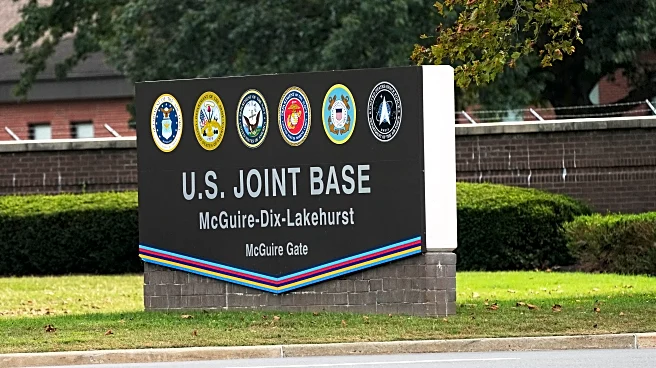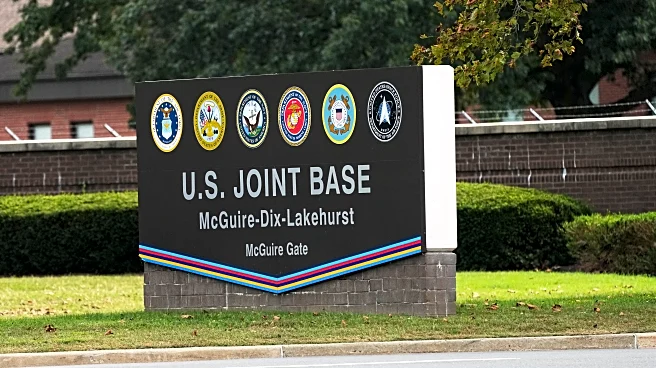What's Happening?
The U.S. Navy has successfully exceeded its recruiting goals for the fiscal year 2025, marking a significant turnaround from previous years. After falling short by 20 percent in FY2023, the Navy implemented several strategic changes to enhance recruitment. These included lowering the minimum acceptable score on the Armed Forces Qualification Test to the lowest level permissible by law and increasing the maximum recruit age to 41. Additionally, the Navy introduced a preparatory program for recruits who initially did not meet test standards or physical fitness requirements. Efforts to expedite medical waivers and tattoo approvals were also made, reducing tattoo review times from 30 days to less than three days. These measures, combined with a cooling private-sector job market, resulted in the Navy recruiting over 44,000 future sailors, the highest number in two decades.
Why It's Important?
The Navy's achievement in meeting its recruiting goals is crucial for maintaining national security and operational readiness. By adapting its recruitment strategies, the Navy has ensured a steady influx of personnel, which is vital for sustaining its global operations. The success also reflects positively on the Navy's ability to compete in a challenging job market, where private-sector opportunities can often lure potential recruits away. This accomplishment not only strengthens the Navy but also sets a precedent for other military branches, which have similarly reported strong recruitment numbers. The Army, Air Force, and Marine Corps have all met or exceeded their recruitment targets, indicating a broader trend of improved military enlistment across the board.
What's Next?
The Navy's recruitment success may lead to further refinements in its enlistment processes, potentially setting new standards for efficiency and inclusivity. As the Navy continues to adapt to changing market conditions, it may explore additional strategies to attract high-quality candidates, such as enhancing career development programs and offering competitive benefits. The focus on maintaining a robust recruitment pipeline will likely continue, ensuring that the Navy remains well-staffed to meet future challenges. Other military branches may also adopt similar strategies to optimize their recruitment efforts, fostering a more dynamic and responsive military workforce.
Beyond the Headlines
The Navy's recruitment strategy highlights the importance of adaptability and innovation in military operations. By lowering barriers to entry and streamlining processes, the Navy has demonstrated a commitment to inclusivity and efficiency. This approach not only benefits the Navy but also serves as a model for other organizations facing recruitment challenges. The emphasis on culture and accountability, as noted by Rear Adm. James Waters, underscores the role of organizational values in driving successful outcomes. As the Navy continues to evolve, these principles may influence broader military and governmental practices, promoting a culture of continuous improvement and responsiveness.













